|
tech
Keeping
your Jeep engine cool
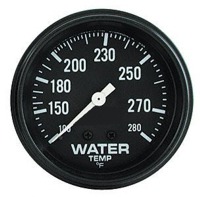
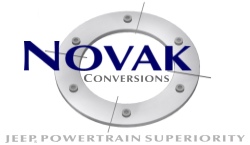
The Novak Guide to
Cooling for Jeeps®
Article provided by
Novak
Conversions - experts in Jeep conversions since 1967
Whether for conversion or
stock Jeep powerplants, cooling is a key issue. We've been
advising customers on cooling since our company was founded
in 1967, and this article is the concise culmination of the
knowledge that we and many of our customers have earned on
the topic.
The radiator is only one part of the complex
cooling equation. You should keep in mind that there are many variables
involved with the process of cooling an engine that it’s nearly impractible
to use hard and fast rules, but if you apply the following principles, you
will be able to make the right decisions to ensure that your cooling system
keeps up with your Jeep® vehicle. Overheating should not be a problem if
some basic principles are observed.
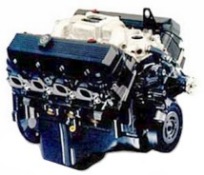 Engine
Condition and Tuning Engine
Condition and Tuning
An often overlooked area is the condition of the engine itself. Mechanically
it must be sound and the water jackets of the block and head(s) must be free
of contaminants and build-up that could act as an insulator, preventing
proper heat transfer to the cooling media. A good flush of the cooling
system and engine with the right detergents is a good way to eliminate this
possibility. You should also be confident that engine compression, timing -
both ignition and camshaft - are optimal.
The carburetion and injection systems must be
sound and tuned. An engine running too rich will generate significantly more
heat. Running fuel injection systems “open-loop”, i.e.; without O2 sensors,
Vehicle Speed Sensors, etc. can cause this situation. Induction tract air
leaks are also a source of cooling problems in that they can cause the
engine to run on too rich of a mixture.
The Radiator Cap and Cooling
System Pressure
The cap of the radiator acts as a filling location, but is also a safety valve
for the cooling system. The cap should be located at the absolute highest
point in the cooling system to allow for the release of air and for proper
filling. The location of the cap and configuration of the radiator has some
import. Your new cross-flow radiator is less likely to push the cap open
prematurely by the pressure of the flowing fluid instead of the excess
pressure of the cooling system itself. This brings us to our next topic...
Pressure.
One very effective way of raising the boiling
point of a fluid is to place it under pressure. Vehicle cooling systems’
operational temperatures vary. “Running hot” in one system’s application may
be normal temperature to another. In other words, an open (or
non-pressurized) cooling system will, of course, boil at 212 degrees
Fahrenheit at sea level. This same system will be normal at 195-220 degrees
F. with a 15-16 pressure cap and 50:50 mix of glycol coolant and water. A
higher pressure in the cooling system offers a higher boiling point. In a
sealed cooling system, the pressure the hot coolant creates itself performs
this pressurization function automatically. Higher coolant pressures also
transfer heat from the cylinder heads more efficiently. But cooling systems
can only withstand so much pressure, and a relief valve built into the
radiator cap provides this function.
As mentioned earlier, the location of the cap
is important. It should always be located at the highest point of the
cooling system; this includes the engine itself. This allows for any air in
the system to rise to the cap area where it can be released, preferably to
an overflow reservoir. The cap area should also see the lowest velocities
within the system, further allowing the coolant to de-aerate near the cap.
This is also the part of the system where the pressure is lowest, which is
crucial. You only want excess heat pressure to open the cap, not the flow of
the coolant. This is why thermostat housing style caps are not recommended.
Naturally, you will want to use a radiator cap
with the higher pressure ratings that the radiator is designed to accept. As
a general rule, standard systems operate at 15-21 PSI, performance radiators
operate at 22-24 PSI, and professional racing radiators will go as high as
29-31 PSI. The coolant will typically only build to 16-18 PSI, due to
expansion up to 200 °F. However, if the engine does overheat due to external
factors, the pressure inside the cooling system could reach as high as 28
PSI. Once the radiator cap has opened and vented coolant, it is a slippery
slope. The engine will not cool down until the engine has been turned off!
We do recommended that for Jeep applications, moderate pressures (22-24) be
used. Higher pressure systems become increasingly difficult to service the
further away from civilization you travel.
|
Coolant
Water has some of the most unique physical properties of the all compounds.
One of these is its ability to carry heat. As such, pure water is the most
effective media to carry the damaging heat away from the engine. The reason
we add an ethylene glycol mix to the water is to eliminate the possibility
of freezing of the coolant (engine and radiator breakage being the risk),
and to effectively raise the boiling point of the coolant past water’s
natural limit of 212 degrees F. Like other alcohols, ethylene glycol extends
the boiling and freezing points of the water to which it is added. However,
when mixing the two, remember that more is not better. Any ethylene glycol
concentration above 70% begins to raise the freezing point of the cooling
media. What’s more, ethylene glycol is significantly less effective at
transferring heat. Mixtures of higher than 50% concentration are only
recommended in the more severely cold climates. Follow the coolant
manufacturers guidlines as you make mixture decisions based on this
principle. |
| The
Novak aluminum RadLock and other radiators require the use of an
aluminum-safe coolant. GM’s Dexcool and other equivalents are
recommended widely available. |
With the inception of aluminum radiators and
now more aluminum engines, silicates and some organic acids have been
introduced into the coolant mixtures. As a rule, don’t mix coolant types and
brands together in your system, or the life of the media will diminish
quickly. And don’t rely on coolant colors alone to indicate compatibility,
as different brands and different national and corporate standards do exist.
We should mention coolant disposability. Most
Jeep owners have the class and responsibility in the disposal of coolant
media, but some may not. Most locales have governmental and environmental
information resources to assist you in finding a facility to dispose your
coolant. Many parts stores and garages will also accept coolant drained from
your vehicle. The thought of having that sort of foul substance percolating
into you or your food’s water supply should be deterrent enough.
 Water
Pumps, Thermostats and Flow Water
Pumps, Thermostats and Flow
One of the myths being perpetuated in the aftermarket is that of high-flow
water pumps - either conventional or electric - being able to cool all
engines better. Faster is seldom better in terms of coolant flow and heat
transfer. The coolant needs enough time in the engine to pull the heat out
of the block and heads. Likewise, coolant needs enough time in the radiator
to shed its accumulated heat before returning to the engine. As such,
fooling with coolant flow speeds without a very solid basis for doing so can
be counterproductive. If your vehicle overheats while at cruising speeds
(and consistently higher RPM’s) than you may be pumping coolant too fast. If
you overheat while crawling in the low RPM’s, you may not be flowing coolant
fast enough. This is a fine balance to acheive, especially with Jeeps
performing hybrid functions.
This leads us to our next subject and
precaution; the thermostat. Heat is a miserable thing, and too much will
destroy your motor. However, too many people arrive at the incorrect
conclusion that a lot less heat will benefit the engine. Your motor is
designed to run optimally within a certain thermal window. This window is
even narrower for fuel injected engines. Running a 160 degree thermostat is
not a good thing. Many do so either because they think they are doing their
engine a favor, or they are trying to increase the cooling efficacy of an
inadequate cooling system. The latter is nearly always an excercise in
futility! If your cooling system can’t hack it, adding a cooler thermostat
will benefit nothing. Of equal concern is when people run the engine without
a thermostat, presuming that the increased flow will increase cooling
capacity. This is another commonly couterproductive philosophy. The
thermostat acts as a necessary restrictor in the system to regulate the flow
rate of coolant. This is contraindicated, per the previous paragraph.
To restate somewhat, many mistakingly think
that all there is to decreasing temperature of the engine is to decrease the
temperature rating of the thermostat. If the cooling system cannot keep up
with the heat the engine is generating, a cooler thermostat will help
precious little. The second misconception that if some engine cooling is
good, more must be better. Again, most engines run optimally at the
recommended factory temperatures. Significant departures from these
recommendations are most often counterproductive. The temperature is
critical to the efficiency of the burn of the fuel and the tolerances of the
motor itself. 180-195 degrees F is common on conventional engines. Modern
motors see higher temperatures (205-210F) , mostly due to fuel and emissions
efficacy.
Flow through the cap is important. Coolant
should flow well enough to avoid the build-up of hot spots in the engine.
Some caps feature ports that allow coolant to flow slightly even with the
thermostat closed. While this delays the engine warming up in cold climates,
it does promote better engine cooling, generally.
 Heat
Exchanger Materials Heat
Exchanger Materials
The materials used to build the radiator are an important factor.
Copper/bronze cores are the most common, but they are slowly being
supplanted by aluminum units, especially where more rigorous cooling
requirements exist. Heat transfers through different materials at different
rates. Aluminum has some of the most impressive transfer capabilities of the
common metals. Generally, an aluminum radiator with its high level of
thermal conductivity will cool better with less core area.
Plastic units, for the discussion of Jeep
conversions, are mostly worthless. They usually don't have the strength or
cooling capacities required. Some radiators employ plastic tanks with a
metallic core, and prove difficult with which to work.
Fans and Airflow
The relationship of the core to the fan is quite important also. The core
should be parallel to, and not more than one inch away from the fan and
should be centered on the fan. The core cannot be mounted to the back of the
grill as there must be space for air to spread out so it can flow through
the core.
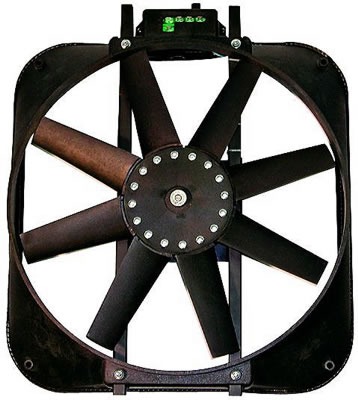 While
on the subject of fans, we have finally seen electric fans become strong
enough to effectively cool an engine conversion. These are typically within
the 2200 - 2800 CFM range. With some good fan choices on the aftermarket,
some of the cooling difficulties once experienced with mechanical fans, are
now lessened. Additionally, many aftermarket electrics come with a built-in
shroud and housing, further facilitating the process. Many units also carry
a temperature sensor and relay to trigger the fan based on radiator heat; a
convenience to the setup process. As for mechanical fans, both flex and
clutch style fans can be less than effective. While
on the subject of fans, we have finally seen electric fans become strong
enough to effectively cool an engine conversion. These are typically within
the 2200 - 2800 CFM range. With some good fan choices on the aftermarket,
some of the cooling difficulties once experienced with mechanical fans, are
now lessened. Additionally, many aftermarket electrics come with a built-in
shroud and housing, further facilitating the process. Many units also carry
a temperature sensor and relay to trigger the fan based on radiator heat; a
convenience to the setup process. As for mechanical fans, both flex and
clutch style fans can be less than effective.
It is important to note that by the time air
has passed through three sets of radiator tubes it has just about reached
the temperature of the coolant and additional thickness does little to
improve cooling. This varies with ambient temperature and speed of airfiow.
It simply means that core area is much more important than core thickness.
Another important factor related to airflow is mounting or carrying items on
the front of the vehicle. Most Jeeps have a rather limited grille opening
area. License plates, oil coolers, driving lights, toolboxes, winches, etc.
will usually cause enough turbulence to disrupt airflow at some speed or
other and this could result in overheating. Also, the mounting of an
automatic transmission cooler in front of the radiator will measurably
diminish engine cooling capacity as well. By the same token, a transmission
cooler mounted behind the radiator will be subject to the heat flowing
through the fins of the radiator, sometimes making it a poor location for
transmission cooling purposes as well.
There may be situations that will result in
less than ideal radiator to fan locations and these can be solved by
shrouding the fan. Actually, a fan shroud is a good idea under any
condition. This causes an air accelerating vacuum which improves airflow
particularly at low vehicle speed. The best installations will have the rear
edge of the shroud centered over the middle of the leading edge of the fan
blades.
While on the subject of shrouds, some ask about
pusher fans vs. the more conventional pullers. Pushers are measurably less
effective due to the shrouding differences and the usual lack of a shroud
with such scenarios. If you find yourself having to resort to a pusher type
fan to even get the motor to fit, you may take it as an indication that the
motor is perhaps too large or misconfigured for the vehicle being converted.
Differences in Engines
Some engines (and some automatic transmissions for that matter) create more
heat when what they should be creating is more power. Different engine
brands and designs of similar displacements burn hotter than others.
In our long experience of cooling engines, we
have discovered interesting and significant differences in the classic V8's,
including (from hottest to coolest burning) AMC, Dodge, Ford (302 & 351) &
Chevrolet. Some engines are notorious for needing larger radiators and/or
oil coolers than a similarly displaced and power producing engine of another
design and brand. Heat is (as per Carnot) a byproduct of power, but also a
product of inefficiency.
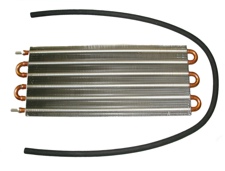 Engine
Oil Cooling Engine
Oil Cooling
No longer considered just a source of additional cooling, engine oil cooling
may be one of the most effective ways of drawing heat out of the engine and
prolonging the quality and efficacy of the engine oil itself.
Some choose a radiator with an integrated oil
cooler (that can be used for the engine oil or the auto transmission). Some
choose a dedicated unit that uses either passive or active (usually an
electric fan) cooling. A combination of both is feasable and will also add
to the volume of oil for your engine.
Gauges & Sensors
Another overlooked item is the accuracy of the temperature gage. Some gages
may be considerably out of calibration. Either electrical or mechanical
gages can be off by 20 to 30 degrees. One should always cross-check the
temperature with a known good gauge. However, it has been our experience
that the good mechanical gauge is more accurate and often preferable, though
the routing of its pressure line is arguably more difficult than stringing a
wire into the cab of the vehicle. One misconception should be debunked here,
and that is that the temperature of the coolant media is the same as the
metals adjacent to it. In fact, some spots of the engine see dramatically
higher temperatures. This is why coolant flow rate is crucial. Should the
coolant flow too slowly past these hot spots, it will boil and then lose is
cooling capabilites, leading to a potential and dangerous chain reaction
within the engine.
Again, a coolant overflow recovery system
should be used on all pressurized cooling systems to make sure they stay
full of coolant at all temperatures.
|